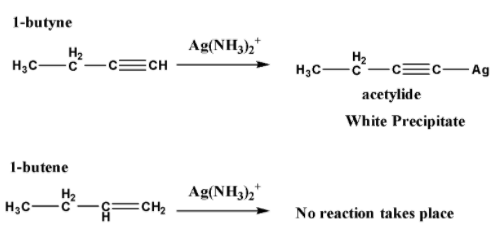Answer
394.8k+ views
Hint: Reagent can be a substance or mixture of compounds which are used in chemical analysis or reactions. When a reagent is added to a system it causes chemical reactions. For a particular reaction, a particular reagent gets consumed in the process of the chemical reaction. In this case, the reagent is an alcoholic potash. In presence of potash, an elimination reaction will occur.
Complete step by step answer:
Here, alcoholic potash is potassium hydroxide. When it reacts with 1 chlorobutane, the elimination reaction occurred.
Elimination reaction is a type of organic reaction in which two substituents get removed from the molecule in either two or one steps. Elimination reactions can occur from 1 and 2 positions, 1 and 3 positions, etc.
1,2 position elimination reaction is very common. When it is in one step then it is \[{E_2}\] elimination reaction. When it is in two steps then it is called \[{E_1}\] elimination reaction.
In elimination reaction, a strong base is required. Strong base abstract the proton at the beta position of the leaving group.
Now when 1-chlorobutane reacts with alcoholic potash the following reaction happens,

In this case, the \[{E_2}\]elimination reaction happens.
So, the correct answer is, A.
Additional information:
To distinguish one from another use of reactions where a change of physical characteristics happens. For example, change of color of the solution, precipitation takes place, generation of effervescence, etc. let take the example of 1-butyne and 1-butene, which are shown below,

When both are treated with \[Ag{\left( {N{H_3}} \right)_2}^ + \] which is called tollen’s reagent, the terminal alkyne reacts with tollen’s reagent and gives a white precipitate of acetylide. On the other hand, alkene does not react with it. These reactions are shown below,

From this reaction, a change of physical characteristic happens which can be visualized to understand the difference between the 1-butyne and 1-butene.
Note:
Elimination reaction is a steric assistance reaction. With increasing the steric crowding of the substrate elimination reaction tendency increases and vice-versa. The \[{E_2}\] elimination reaction is a second-order reaction and \[{E_1}\] elimination reaction is a first-order reaction.
Complete step by step answer:
Here, alcoholic potash is potassium hydroxide. When it reacts with 1 chlorobutane, the elimination reaction occurred.
Elimination reaction is a type of organic reaction in which two substituents get removed from the molecule in either two or one steps. Elimination reactions can occur from 1 and 2 positions, 1 and 3 positions, etc.
1,2 position elimination reaction is very common. When it is in one step then it is \[{E_2}\] elimination reaction. When it is in two steps then it is called \[{E_1}\] elimination reaction.
In elimination reaction, a strong base is required. Strong base abstract the proton at the beta position of the leaving group.
Now when 1-chlorobutane reacts with alcoholic potash the following reaction happens,

In this case, the \[{E_2}\]elimination reaction happens.
So, the correct answer is, A.
Additional information:
To distinguish one from another use of reactions where a change of physical characteristics happens. For example, change of color of the solution, precipitation takes place, generation of effervescence, etc. let take the example of 1-butyne and 1-butene, which are shown below,

When both are treated with \[Ag{\left( {N{H_3}} \right)_2}^ + \] which is called tollen’s reagent, the terminal alkyne reacts with tollen’s reagent and gives a white precipitate of acetylide. On the other hand, alkene does not react with it. These reactions are shown below,

From this reaction, a change of physical characteristic happens which can be visualized to understand the difference between the 1-butyne and 1-butene.
Note:
Elimination reaction is a steric assistance reaction. With increasing the steric crowding of the substrate elimination reaction tendency increases and vice-versa. The \[{E_2}\] elimination reaction is a second-order reaction and \[{E_1}\] elimination reaction is a first-order reaction.
Recently Updated Pages
Basicity of sulphurous acid and sulphuric acid are

Three beakers labelled as A B and C each containing 25 mL of water were taken A small amount of NaOH anhydrous CuSO4 and NaCl were added to the beakers A B and C respectively It was observed that there was an increase in the temperature of the solutions contained in beakers A and B whereas in case of beaker C the temperature of the solution falls Which one of the following statements isarecorrect i In beakers A and B exothermic process has occurred ii In beakers A and B endothermic process has occurred iii In beaker C exothermic process has occurred iv In beaker C endothermic process has occurred

What is the stopping potential when the metal with class 12 physics JEE_Main

The momentum of a photon is 2 times 10 16gm cmsec Its class 12 physics JEE_Main

How do you arrange NH4 + BF3 H2O C2H2 in increasing class 11 chemistry CBSE

Is H mCT and q mCT the same thing If so which is more class 11 chemistry CBSE

Trending doubts
Difference Between Plant Cell and Animal Cell

Difference between Prokaryotic cell and Eukaryotic class 11 biology CBSE

Fill the blanks with the suitable prepositions 1 The class 9 english CBSE

Change the following sentences into negative and interrogative class 10 english CBSE

Give 10 examples for herbs , shrubs , climbers , creepers

Fill the blanks with proper collective nouns 1 A of class 10 english CBSE

Select the word that is correctly spelled a Twelveth class 10 english CBSE

How fast is 60 miles per hour in kilometres per ho class 10 maths CBSE

What organs are located on the left side of your body class 11 biology CBSE



